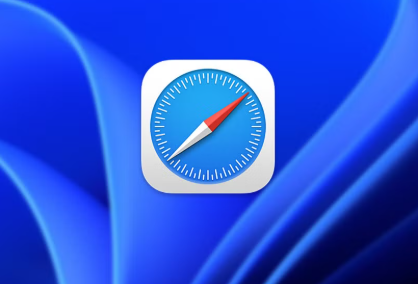Web developers should ensure that their websites work flawlessly across browsers and all users. For that, it is important to test the website on Safari for Windows and it can be found pre-installed predominantly on macOS and iOS devices.
Testing on Windows Safari is, nonetheless, important to attain Apple’s ecosystem compatibility even when you are developing on Windows.
In this article, we will delve into different ways of testing Safari on Windows with an emphasis on cross-browser testing techniques and tools.
Introduction to Cross-Browser Testing
Cross-browser testing is an extremely crucial web development phase wherein the behavior of a site is tested on multiple browsers and Operating Systems (OSs). Cross-browser testing will ensure that the end users have the same experience regardless of which browser they access.
Safari is one of the players in this category and, therefore, it requires special treatment since it is equipped with a special rendering engine and features.
What is Safari for Windows?
Safari for Windows was Apple’s web browser for Windows OS. It was initially released in 2007 at WWDC, and Safari 3 was the first to be released on Windows. All this was Apple’s attempt to get more people on Safari than Mac users, since it was already the fastest available browser on Mac. Safari 3 on Windows was the fastest on the Windows platform as well, which had web pages loaded faster than Internet Explorer 7 and Mozilla Firefox 2.
Support for Safari on Windows continued until 2012, however, and version 5.1.7 was the final one to be released to Windows users. Brief as it was, Windows’ Safari had simple-to-use bookmarks, clean tabbed browsing, and built-in RSS feeds, all signs of Apple’s focus on user interface and open web standards.
Why Test Safari on Windows?
Testing Safari on Windows is vital for a few reasons. One, it will ensure compatibility, i.e., your website behaves as you would want for Safari users. Two, Safari is a high-volume browser, particularly on handheld devices. Third, Safari’s unique characteristics, including the WebKit rendering engine, can impact the way sites render, and it is imperative to test for such differences.
Methods to Test Safari on Windows
Testing Safari on Windows is necessary for cross-browser testing, particularly because Safari isn’t native to Windows. Despite this restriction, there are several workable ways to test Safari on a Windows platform. The following are the methods to Test Safari on Windows:
- Using an Old Version of Safari for Windows
Apple dropped Safari for Windows in 2012, but it is possible to download and install version 5.1.7. Yet, this version does not support contemporary web standards and is not suggested for extensive testing.
You would have to obtain a reputable source to download the installer, execute it, and follow the prompts to install Safari. Once installed, you can open and test your website.
- Virtual Machines (VMs)
Having a VM of macOS on your Windows device helps you to utilize Safari as if you were on a Mac. By this, you would have a virtual setup with tools such as VMware or VirtualBox.
You have to install the VM and then you install macOS, and then you download and install Safari inside the VM. This is more of a real-world test environment but could have more steps or third-party software to enable installing macOS in a non-Apple environment.
- Remote Access to macOS Devices
You can remote and access your mac into it from your Windows system using tools such as TeamViewer or Chrome Remote Desktop. This trick would enable you to test and use Safari on the actual Mac itself. It gives you real-world test environments without the hassle of installing a VM or testing previous versions of Safari.
- Cloud-Based Testing Services
Platforms like LambdaTest offer access to real Safari browsers on macOS environments without needing a Mac. By using LambdaTest, you can choose the preferred version of Safari and macOS environment, test your website, and perform Quality Assurance (QA) on your Windows machine.
It is especially handy for organizations requiring cross-browser testing across various browsers and OSs without having to install local infrastructure.
How to Use Safari for Cross-Browser Web Testing?
Cross-browser web testing with Safari involves different techniques to maintain compatibility on other platforms. One of the ways is using LambdaTest, which gives you access to live Safari browsers on macOS without needing a Mac. These environments allow you to execute live-interactive and automated tests on many versions of Safari, and your site performs like you expect for Safari users.
Remote access or VMs can also be used to access macOS machines remotely to test Safari yourself, though these are heavier to install and maintain. Also, tools like Selenium WebDriver make testing easier by using scripts to test multiple browsers, including Safari.
Automated Testing With Selenium WebDriver
Selenium WebDriver is a powerful cross-browser test automation tool with Safari testing. To automate test cases for Safari, you write test scripts in programming languages like Python or Java. The scripts drive the actions on Safari, for instance, navigating to web pages, clicking on items, and verifying content.
Selenium is simple to use with automated testing and is browser-neutral. Safari isn’t without its limitations, however, including very limited support for HTTP and HTTPS protocols that could need to be treated in some special manner in your test scripts.
Selenium Safari testing is achievable in cloud environments like LambdaTest, which provides you with access to Safari browsers within macOS environments. This implies that you can automate testing without needing a local Mac environment, and it is easy to include Safari testing in your cross-browser testing process.
Best Practices for Cross-Browser Web Testing with Safari
You need to implement cross-browser testing best practices to make your website work flawlessly on every browser, including Safari. Here are some of the most important practices to improve your testing process:
- Define a Testing Matrix
Begin by creating a testing matrix that delineates the most frequently utilized browsers and versions used by your target market. Test on popular browsers such as Google Chrome, Mozilla Firefox, Apple Safari, and Microsoft Edge first, but do not exclude less popular ones completely14. For Safari, test both the desktop and mobile versions to gain broad coverage.
- Automate Testing
Use automation tools such as Selenium WebDriver to automate your testing. Automation makes the test execution easy on multiple browsers at once, ensuring consistency and minimizing manual effort. To that you can easily add automated tests to your Continuous Integration/Continuous Deployment (CI/CD) pipeline to identify problems very soon in the development process.
- Perform Functional and Visual Testing
Ensure that interactive features work as expected across browsers through functional testing. This involves checking that forms are submittable, buttons are clickable and navigation menus are operating properly. Visual testing is concerned with ensuring that the visual appearance is consistent across all browsers and devices, looking for layout faults or misalignments.
- Test on Real Devices and Browsers
Use real devices and browsers for testing whenever possible. This can be achieved through cloud-based services that offer access to real browser instances on various OSs. For Safari, testing on real macOS and iOS devices ensures that your website behaves as expected in real-world scenarios.
- Keep Your Testing Environment Updated
Keep your testing environment updated with the current browser versions to keep pace with the newer web standards. Safari in particular requires it since updates can add modifications to web page rendering and user interaction.
- Use Cross-Browser Compatible Libraries and Frameworks
You should take proper advantage of libraries and frameworks that are built to manage cross-browser discrepancies such as jQuery or Bootstrap6.
These libraries make development easier by offering you the pre-tested components that are compatible across different browsers.
- Test Early and Often
Incorporate cross-browser testing throughout the development process. Early testing helps identify and resolve issues before they become complex and costly. This approach ensures that your website remains compatible with Safari and other browsers as your project evolves.
Challenges in Testing Safari on Windows
Testing Safari on Windows presents several challenges due to its discontinued support and the need for alternative testing methods. Here are some of the key issues developers face:
- Lack of Native Support
Safari is not a native Windows application so one cannot natively install it on a Windows platform. This problem forces developers to use hacks like running older versions of Safari, installing VMs, or testing through cloud-based environments. These methods could be clunky and won’t exactly replicate the native Safari experience on macOS or iOS platforms.
- Outdated Safari Versions
The most current version of Safari for Windows is 5.1.7, released in 2012. The newer release did not implement newer web standards, including HTML5, CSS3, and JavaScript features since the release date hence making its use more difficult. It is not therefore suitable for comprehensive testing, as it is unlikely to reflect how your site appears or behaves on more current versions of Safari.
- Cost and Complexity of VMs and Cloud Services
Testing Safari on Windows using VMs or cloud services may cost extra. Installing a VM involves buying macOS licenses and possibly extra software to use macOS on non-Apple hardware. Cloud services, although easy to use, also have subscription costs. To add onto that it could be complicated to manage these environments majorly for those with no prior virtualization or cloud computing experience.
Overcoming The Above Challenges
To overcome these challenges, consider the following strategies:
- Utilize Cloud-Based Services
Platforms such as LambdaTest provide simple access to Safari environments without using local infrastructure. These services enable you to test your site on actual Safari browsers for varying versions and macOS configurations, all from your Windows computer. This method streamlines testing and cuts down on the necessity for intricate setup or upkeep.
- Regularly Update VMs
If you choose to use VMs, ensure that your macOS and Safari versions are regularly updated. This provides a more accurate testing environment and allows you to test against the latest Safari features and web standards.
- Automate Testing Processes
Selenium WebDriver is an example of a tool that can automate testing procedures, streamlining your process and saving you money. Automation enables you to test on various browsers, such as Safari, in a standardized and efficient way. This method also works well with cloud-based services, which further boost your testing capabilities.
Future of Safari for Cross-Browser Web Testing
The future of Safari in cross-browser web testing is bright, with cloud-based testing services continuing to make it simpler to test Safari without local infrastructure. With Safari maintaining a large market share, particularly on mobile, compatibility will only become more important for developers.
Cloud platforms will help play an ongoing part by offering easy access to real Safari browsers, and decreasing dependency on older versions or emulators. In addition, the inclusion of automation tools with these cloud services will add to efficiency and accuracy in cross-browser testing.
With changing web standards, the need for testing on actual devices and browsers will only grow stronger, and thus Safari will be an essential part of thorough cross-browser testing approaches.
Conclusion
To conclude, testing Safari on Windows is essential for providing a smooth user experience on various browsers and platforms. With the use of older versions of Safari, VMs, remote login, and cloud platforms such as LambdaTest, you can test the cross-browser compatibility of your website using Safari without having a Mac at all.
All these processes of cross-browser testing lead to a smooth user experience, which is the top priority of any successful web application. Incorporating these methods in your development process ensures that your website is running on all popular browsers such as Safari.
Recommended Aarticles
Jablw.Rv – Revolutionizing News Consumption!
Review Ninbeuproaca Ltd – A Personal Experience!
Hoc Layout – Boost Code Reusability And Improve Ui Consistency!
The Transformative Role of Enterprise AI in Modern Business Operations




